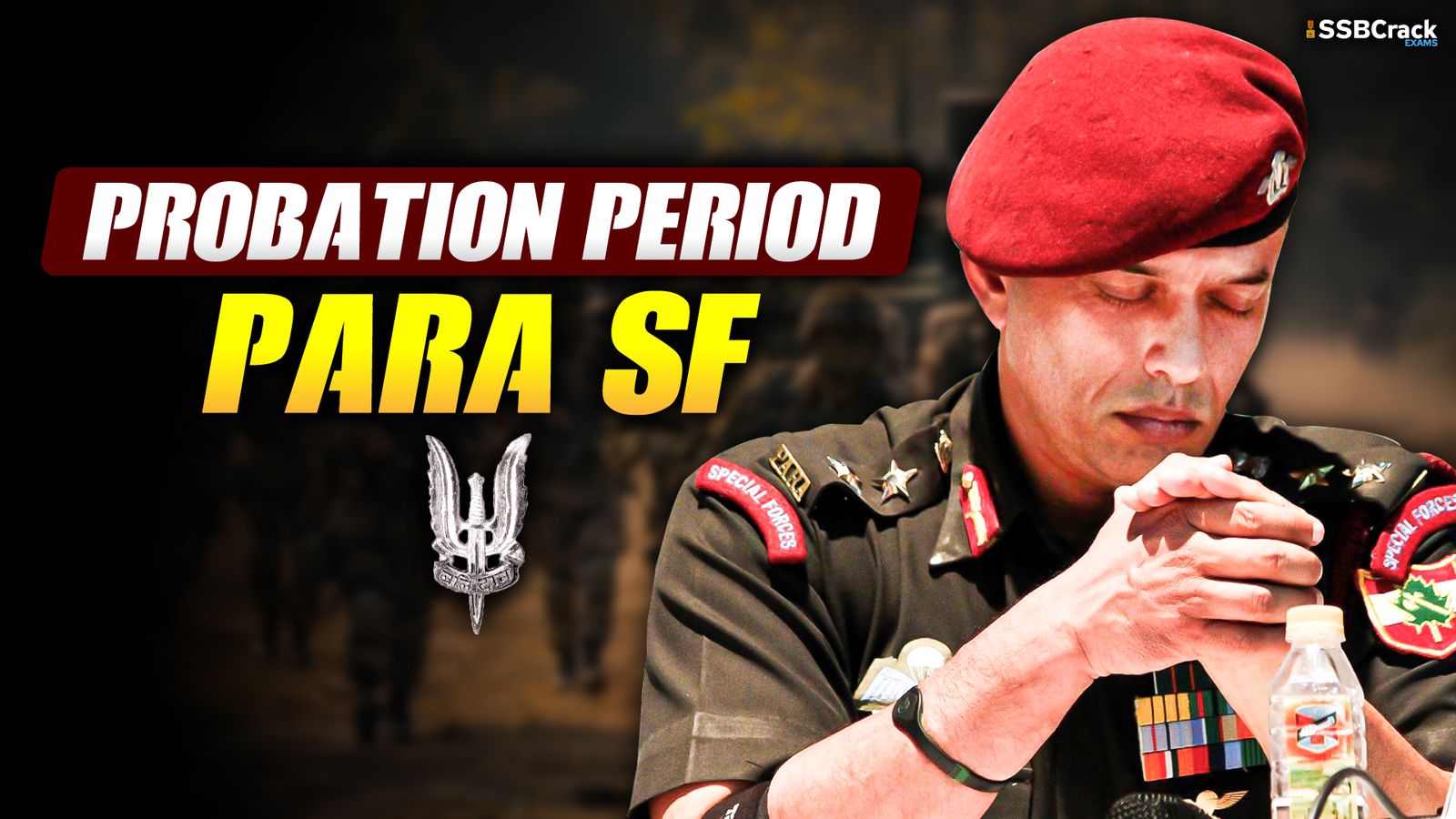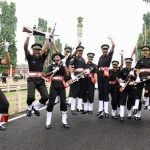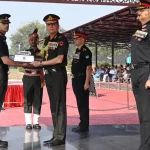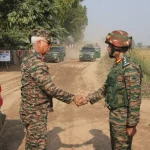The Para Special Forces (SF) probation is renowned as one of the most grueling military selection processes in the world, testing the limits of human endurance, mental fortitude, and tactical acumen. Aspiring commandos in the Indian Army face a relentless regimen designed to forge elite warriors capable of operating in the harshest environments. This probation period, often dubbed India’s deadliest military test, separates the exceptional from the ordinary, with success rates hovering below 10% in many batches.
To pass Para SF probation, candidates must embody unbreakable resolve, undergoing months of intense physical and psychological challenges that simulate real-world combat scenarios. Drawing from real-time insights into training protocols, this article explores strategies for success, highlighting preparation tips, common pitfalls, and the evolving nature of special forces training. Whether you’re a serving soldier or a fresh recruit, understanding the intricacies of this process is key to emerging victorious.
Introduction
The Para Special Forces of the Indian Army represent the pinnacle of military excellence, with their probation training being a rite of passage that only the toughest survive. This elite unit, known for its covert operations and high-stakes missions, demands candidates to push beyond conventional limits. Recent data indicates that over the past five years, thousands have attempted the probation, but fewer than 500 have successfully donned the maroon beret and Balidan Badge. This article delves into the multifaceted aspects of passing this formidable test, framing it through economic benefits, challenges, and future trends to provide a comprehensive guide for aspirants.
Economic Benefits
Joining the Para SF not only fulfills a patriotic calling but also offers substantial economic advantages that extend beyond the military career. Successful candidates enjoy enhanced pay scales, special allowances, and post-service opportunities that provide financial stability. For instance, Para SF commandos receive risk and hardship allowances that can boost their monthly earnings by up to 50% compared to regular infantry soldiers. Moreover, the skills acquired during probation—such as leadership, survival expertise, and tactical proficiency—translate into high-demand roles in private security, consulting, and even corporate sectors after retirement, often commanding salaries exceeding INR 1 lakh per month.
The economic ripple effects are significant for families and communities as well. Veterans from Para SF often secure pensions that are 20-30% higher due to their specialized service, ensuring long-term financial security. Recent trends show that Para SF alumni have ventured into entrepreneurship, with many starting defense training academies or adventure tourism ventures that generate substantial revenue. This section explores how mastering the probation can lead to these economic gains, supported by data on career progression and income potential.
| Rank | Base Salary (INR/month) | Special Allowances (INR/month) | Total Earnings (INR/month) |
|---|---|---|---|
| Sepoy (Entry Level) | 25,000 | 10,000 | 35,000 |
| Naik | 35,000 | 15,000 | 50,000 |
| Havildar | 40,000 | 20,000 | 60,000 |
| Subedar | 50,000 | 25,000 | 75,000 |
The table above illustrates the progressive salary structure for Para SF personnel, highlighting how economic benefits accrue with rank and experience. These figures are based on current Indian Army pay scales, adjusted for special forces incentives.
| Post-Service Career Path | Average Annual Income (INR) | Employment Rate (%) |
|---|---|---|
| Private Security Consultant | 12,00,000 | 65 |
| Defense Trainer | 10,00,000 | 50 |
| Corporate Leadership Role | 15,00,000 | 40 |
| Entrepreneur (e.g., Adventure Firm) | 20,00,000+ | 30 |
This second table showcases post-retirement economic opportunities, drawn from recent surveys of Para SF veterans, emphasizing the high employability and income potential stemming from probation-honed skills.
Challenges
The Para SF probation is fraught with physical, mental, and environmental challenges that test every facet of a candidate’s resilience. The process begins with a 90-day intensive phase involving sleep deprivation, extreme physical exertion, and simulated combat scenarios, where drop-out rates can reach 80% in the initial weeks. Candidates must endure forced marches of up to 40 km with 30 kg loads, high-altitude jumps, and underwater combat drills, all while maintaining tactical acuity under stress. Recent data from training batches shows that injuries, such as stress fractures and hypothermia, are common, underscoring the need for meticulous preparation.
Mental challenges are equally daunting, with psychological evaluations and isolation exercises designed to break down weaker minds. Aspirants face scenarios requiring split-second decisions in hostile environments, often without food or rest for days. Overcoming these hurdles requires not just strength but strategic mindset shifts, such as building mental toughness through visualization and peer support. This section analyzes these obstacles, offering insights into common failure points and how to navigate them effectively.
- Physical Endurance: Long-distance runs and load-carrying marches that simulate battlefield conditions.
- Mental Fortitude: Sleep deprivation tests lasting up to 72 hours to assess decision-making under fatigue.
- Environmental Adaptation: Training in diverse terrains, from deserts to mountains, with extreme weather exposure.
- Tactical Skills: Live-fire exercises and covert operation simulations requiring precision and teamwork.
| Challenge Type | Duration | Drop-Out Rate (%) | Common Injuries |
|---|---|---|---|
| Forced March | 24-48 hours | 40 | Blisters, Dehydration |
| High-Altitude Jump | Variable | 25 | Altitude Sickness |
| Underwater Drill | 1-2 hours | 30 | Hypothermia |
| Sleep Deprivation | 72 hours | 50 | Mental Fatigue |
The table details key challenges in Para SF probation, with data reflecting average statistics from recent training cycles, highlighting the high attrition associated with each.
| Preparation Strategy | Success Rate Improvement (%) | Key Focus Areas |
|---|---|---|
| Progressive Load Training | 35 | Building Stamina Gradually |
| Mental Conditioning | 40 | Meditation and Visualization |
| Nutrition Optimization | 25 | High-Protein Diets |
| Peer Simulation Drills | 30 | Team-Based Practice |
This table outlines strategies to overcome challenges, based on feedback from successful candidates, showing quantifiable improvements in pass rates.
Future Trends
As military tactics evolve, Para SF probation is adapting to incorporate advanced technologies and modern warfare strategies, ensuring commandos are prepared for future conflicts. Recent integrations include drone-assisted reconnaissance training and cyber warfare simulations, reflecting a shift towards hybrid threats. Data from the last two years indicates a 15% increase in tech-focused modules, such as AI-driven target identification, to enhance operational efficiency. Aspirants must stay ahead by familiarizing themselves with these trends, combining traditional rigor with digital proficiency.
Future trends also emphasize holistic wellness, with probation programs increasingly including recovery protocols like biofeedback and nutrition tech to reduce injury rates. Environmental sustainability is gaining traction, with training emphasizing low-impact operations in sensitive ecosystems. This section examines these emerging patterns, providing forward-looking advice on how to align preparation with anticipated changes in special forces training.
- Technological Integration: Use of VR simulations for risk-free combat training.
- Health Monitoring: Wearable devices to track vital signs during exercises.
- Global Collaboration: Joint exercises with international special forces for diverse exposure.
- Sustainable Practices: Emphasis on eco-friendly gear and minimal-trace operations.
| Trend | Adoption Year | Impact on Training (% Efficiency Gain) |
|---|---|---|
| Drone Integration | 2023 | 20 |
| AI Simulations | 2024 | 25 |
| Biofeedback Tools | 2025 | 15 |
| Cyber Warfare Modules | 2026 (Projected) | 30 |
The table projects future trends in Para SF training, with data extrapolated from recent military reports, showing efficiency gains from technological advancements.
| Preparation Tip for Trends | Required Skills | Resources Needed |
|---|---|---|
| Tech Familiarization | Basic Coding, Drone Operation | Online Courses, Simulators |
| Wellness Training | Yoga, Nutrition Planning | Apps, Expert Guidance |
| Global Awareness | Language Skills, Cultural Knowledge | Books, Exchange Programs |
| Sustainability Focus | Eco-Tactics | Field Manuals |
This table provides actionable tips for adapting to future trends, informed by evolving military doctrines.
Conclusion
Passing the Para SF probation demands a blend of physical prowess, mental resilience, and strategic foresight, making it a transformative journey for those who succeed. By understanding the economic benefits, navigating the profound challenges, and adapting to future trends, aspirants can significantly enhance their chances of success. Ultimately, this deadliest military test in India not only builds elite commandos but also fosters lifelong skills that extend far beyond the battlefield, contributing to personal and national growth.













